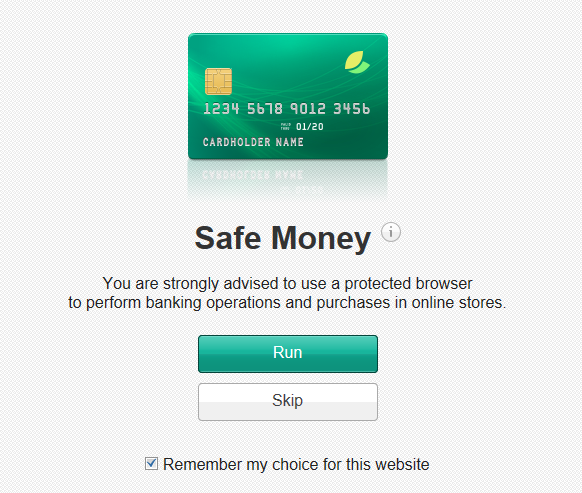Kaspersky Internet Security 2013 review
 If you like your security suites to be hassle-free then Kaspersky Internet Security 2013 should impress you immediately. Installation was quick and easy, no complicated options to consider and the program was up and running in under a minute on our test PC.
If you like your security suites to be hassle-free then Kaspersky Internet Security 2013 should impress you immediately. Installation was quick and easy, no complicated options to consider and the program was up and running in under a minute on our test PC.
The simplicity continues, at least for those familiar with the 2012 interface, because apart from a few minor tweaks the suite looks and feels very much the same: a clean and clear display keeps you to-to-date with current threats, update status, licence details and more, while a scrolling toolbar provides easy access to the program’s various modules.
One small initial problem: updating is relatively slow, with Kaspersky’s servers proving a little slow most of the time (100-200Kbps was typical).
Update file sizes are a little smaller now, though, so downloads never take very long. And once we were past the initial delay, with KIS 2013 fully equipped to detect the very latest malware, it was time for the tests to begin.
Antivirus
Kaspersky Internet Security 2013 has no shortage of scanning options. The program can check individual items, a few critical areas, or your entire system; removable drives may be scanned on connection, and when your PC is idle then KIS 2013 will automatically run a few basic checks. None of this makes for a complex interface, though, and you can launch the scan you need in just a couple of clicks.
Accuracy is good, too. Kaspersky scores highly with independent testing labs -- the last AV Comparatives On-Demand report saw the 2012 engine awarded the highest “Advanced +” rating, for instance -- and this new build detected and removed all our samples without issue.
The story with scanning speeds was a little more mixed. Full system scans achieved average performance on our test PC (around 18 minutes for a 750,000 object, full system scan), and there’s no major acceleration with subsequent checks: running a full system scan the next day took around the same time.
But on the other hand, the Critical Areas Scan examines the most likely areas of infection at much higher speeds, typically under a minute on our system, very acceptable for regular use.
Resource usage is reasonable, and a little better than previous editions. The program used around 10-40MB RAM while running in the background, very acceptable, although this can climb significantly when running a scan.
Kaspersky says Internet Security 2013 has also been optimized to reduce its impact on Windows and application launch times, and that was certainly our experience. There is still a delay, our boot time was extended by around 8 percent, but that’s less than many suites, and overall we didn’t notice any major performance issues.

Safe Money
We were sad to see KIS 2013 drop the old Safe Run feature, which was a neat way to run applications and websites in an isolated environment. The core technologies remain in the new “Safe Money”, though, which uses a secure browser to prevent your online payment, banking and shopping details.
We first encountered the new system when clicking the “Pay Now” button in an eBay email. Recognizing the sensitive URL, KIS 2013 recommended that we use Safe Money, opening the page in a protected browser, isolated from the rest of the system.
In the background, Safe Money then checks the remote website to make sure it’s authentic. And if all is well, and you click in a text entry field (for a password or credit card number, say), the program automatically pops up a virtual keyboard to help you bypass key loggers.
We found this didn’t always run quite as smoothly as it should. In particular, on a couple of occasions Safe Money reported issues with security certificates when trying to pay for eBay items, and we’re not sure why (it seemed unlikely, and our own checks revealed no problems).
Most of the time the technology worked entirely as advertised, though. It’s certainly easy to use. And with Safe Money receiving a glowing report elsewhere -- Matousec found it blocked 100 percent of their attacks in a recent test -- it certainly looks like a welcome addition to Kaspersky Internet Security, and hopefully problems such as ours will be quickly cleared up.
Online Protection
Away from Safe Money, Kaspersky’s regular online protection tools start with the URL Advisor, colored icons in your search engine results which highlight safe sites.
Click a link directly and Kaspersky’s improved antiphishing engine takes over. It seems to be working well: 18 out of 20 test URLs were blocked, the others had been reported only minutes before we checked it, and the program detected and removed the malware they were trying to download, anyway, so we were never in any danger.
Even if the download had succeeded, a new Automatic Exploit Prevention engine watches program behavior and aims to block even zero-day vulnerabilities in commonly used software. Which sounds good, although we’ve yet to devise a test for this, so we’ve no verdict on it just yet.
Elsewhere, the firewall does an excellent job of protecting you from network attacks and controlling access to your Internet connection. It makes intelligent choices entirely automatically, and so you won’t be hassled with annoying or technical alerts.

The spam filter is another area that has seen worthwhile changes this time. The program detected 84 percent of the spam emails during our tests, a major improvement and excellent for a security suite product. But it did also make the wrong decision a few times, even flagging one eBay Auctiva.com email as junk, so you’ll need to check your spam folder occasionally for misplaced messages.
And the suite also offers a parental controls module with a strong set of features. You’re able to define when each user can access the PC or go online, the applications they can run, the type of websites they can visit and files they’re able to download, even the people they can contact via social networking. This is all a little easier thanks to simpler monitoring of HTTPS connections, and the module certainly delivers more than we’d expect from a security suite.
Bonus Tools
Kaspersky Internet Security 2013 is plainly not short on functionality, and there are plenty of other interesting features to explore, everywhere you look.
The Vulnerability Scan checks your system for outdated applications (an old copy of Flash with a security problem, say) and poorly configured system settings. It can be technical -- warnings like “service termination timeout is outside allowable range” won’t mean much to some -- but the scan is also fast and thorough.
The Network Monitor displays your network traffic by application, so it’s easy to see which programs are hogging all your bandwidth: very useful.
Novices can use the Applications Activity to check their running programs for possible malware, to see which processes are popular, which are suspiciously rare. While geeks will love the low-level controls it provides (in a click or two you can prevent a program from touching your startup settings, for instance).
And the Tools menu provides options to scan your IE settings for problems, clear your recent Windows activity history, or look for and fix poorly configured system settings.
Kaspersky Internet Security 2013 has some issues, then, but it also improves on the previous edition in a number of areas, and on balance the suite remains powerful, effective and easy to use.
Verdict: Kaspersky Internet Security 2013 has the power and features that experts need, while also being easy enough for novices to use. And while there are no revolutionary new changes this time around, most areas see worthwhile improvements, making the suite a solid and worthwhile upgrade. The software is available for Windows XP, Vista, 7, 8 -- 32 and 64-bit editions -- and retails for $59.95.
Photo Credit: Kheng Guan Toh/Shutterstock
